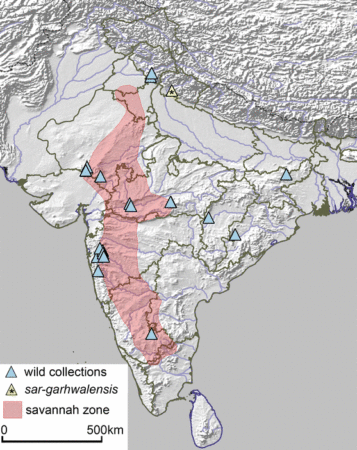The indefatigable Dorian Fuller has been even less fatigable than usual lately, with a couple of papers in the past few weeks on the history of the horsegram, Macrotyloma uniflorum. The first is a general review of the geographical, linguistic and archaeological evidence for the origins of the crop. They point to a long history in India and at least two separate domestications there.

The second is a much deeper dive into the history of domestication, using high resolution x-ray computed tomography with a synchrotron to measure non-destructively the decrease in seed coat thickness with time in archaeological remains of domesticated material. A thin seed coat is thought to be related to loss of dormancy, and hence part of the domestication syndrome. It had been suggested that rare non-dormant variants might have been selected during domestication, but the evidence from horsegram is that even the thick-coated, and therefore presumably still dormant, material was domesticated.
Which is all very interesting, but what I want to leave you with is a little quiz. Given that Kersting’s groundnut is now also in Macrotyloma, as M. geocarpum (Harms) Maréchal & Baudet, how many other con-generic species can you think of that were domesticated on separate continents? Apart from the two Oryza species, of course.